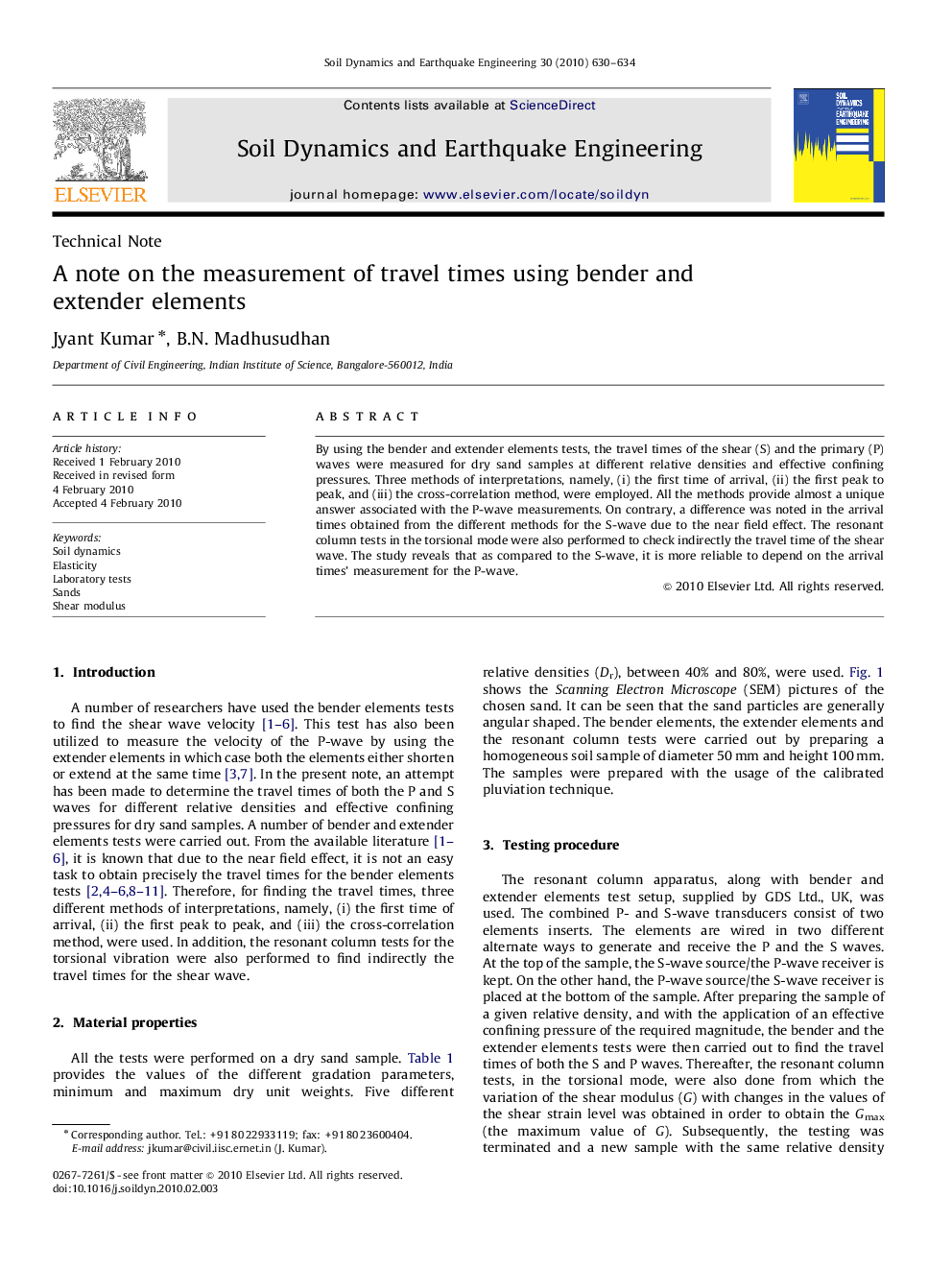| Article ID | Journal | Published Year | Pages | File Type |
|---|---|---|---|---|
| 304828 | Soil Dynamics and Earthquake Engineering | 2010 | 5 Pages |
By using the bender and extender elements tests, the travel times of the shear (S) and the primary (P) waves were measured for dry sand samples at different relative densities and effective confining pressures. Three methods of interpretations, namely, (i) the first time of arrival, (ii) the first peak to peak, and (iii) the cross-correlation method, were employed. All the methods provide almost a unique answer associated with the P-wave measurements. On contrary, a difference was noted in the arrival times obtained from the different methods for the S-wave due to the near field effect. The resonant column tests in the torsional mode were also performed to check indirectly the travel time of the shear wave. The study reveals that as compared to the S-wave, it is more reliable to depend on the arrival times’ measurement for the P-wave.
